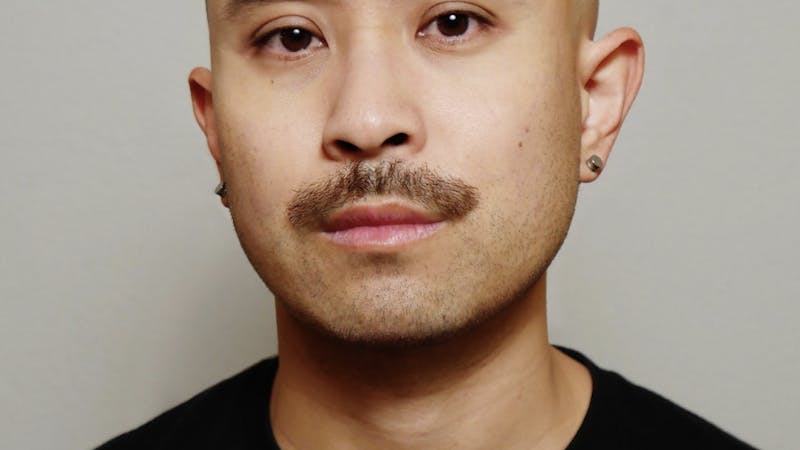Letters to the Editor
Arts, VADA stories need clarification
To the editor:Readers of the Nov. 14th edition of the Rice Thresher saw a two-page spread entitled "The state of the arts." The spread contains two articles: one, by Logan Beck, focuses on the student art show and support for the arts in general at Rice; the other, by Josh Rutenberg, focuses specifically on reforms and goals within the Department of Visual and Dramatic Arts. The general impression conveyed by both articles is one of a difficult struggle for recognition and resources to support the arts at Rice, aimed at a university administration that appears to place secondary value on the arts in relation to other priorities of the university.
I am responding to the article to set the record straight and offer the student readership another perspective, which I believe to be rather more balanced and accurate. My main concern is with the larger message about the arts, but I will make a briefer comment on the specific issue of the student show and the Rice Gallery, where Beck's article, in my opinion, is carefully balanced and fair in presenting both sides of the issue.
With regard to support for the arts in general, I cannot comment on the period before 2003, prior to my arrival at Rice. But I ask students to consider the following facts from the period 2003 to the present: Over the last six years, approximately $500,000 of new funding has been poured into VADA. Except for extraordinary philanthropic opportunities that have established new professorships in the School of Humanities and the Ph. D. program in Art History, no other department in the School of Humanities has received as much new support.
Where has this funding gone? With the support of another major philanthropist, Suzanne Deal Booth, the School of Humanities has been able to hire between six and nine Core Fellows each year from the prestigious program at the Glassell School of Art, part of the Museum of Fine Arts, Houston. Together these core fellows have taught an additional 33 studio classes which would not otherwise have been available to VADA majors, bringing fresh talent and expertise into the department. The school has supported the other media that are part of VADA as well, with the incorporation of the theater program into VADA in 2006-'07, a move proposed and fully supported by former VADA chair Karin Broker, in an effort to bring greater vitality and breadth into the curriculum in lighting design as well as filmmaking. Additional faculty have been added to VADA, including Paul Hester, who is quoted in Beck's article.
The university undertook a total renovation of the cinema in the Rice Media Center, with new seating, a glass bead screen and projector equipment, making it the only glass bead screen theater in this entire region, with full capacity to screen 35 mm films.
With regard to film studies, I have to admit to a bit of a surprise at reading that Professor Brian Huberman is single-handedly in talks with the University of Texas-Austin about the establishment of a film institute, since I brought Professor Huberman into that discussion several months after I personally initiated that effort at collaboration, which is still in the works. The film initiative is mentioned in the Rutenberg article.
Looking beyond VADA, at the arts more generally, students may wish to consider additional facts pointing to Rice's support for the arts.
The School of Humanities invested $200,000 in the Rice Gallery to upgrade its lighting, and with more philanthropic support from Ms. Booth, added two new staff positions to the gallery. The School of Humanities received one of the largest gifts ever made by the Brown Foundation, $10 million, to launch a new Ph.D. program in Art History. This is just one of the great success stories about the visibility and strength of art history at Rice.
In the area of creative writing, many students, I'm sure, are aware of the launch of a new student literary journal, R2, the addition of new courses in creative writing with our Parks Fellowship program and the opportunity to bring great writers to campus, like Robert Pinksy or Ha Jin, through our Campbell Lecture Series.
When you put together all the philanthropic support for VADA, Art History and creative writing over the last five years, it amounts to an impressive number, upwards of $17 million. Contrary to the impression that Beck's article gives, many alumni and faculty ask me, how did the arts at Rice soar into such visibility in such a short time?
Outside the School of Humanities, President David Leebron, who is treated with gross unfairness in the article, has stood behind a major effort to launch a campus art program. It is clear from another article in the Thresher, the opinion piece by Sarah Bronson, that a great deal of work remains to be done in providing a larger educational context for artworks on campus and that is part of the president's vision as well. Bronson fails to mention that the "hundreds of thousands of dollars at [Rice's] disposal" are actually a gift from two donors with deep attachment and love of this university, whose contribution to the university she mocks.
I have little to add to the report about the student art show. I think in that respect Beck's reporting is very fair and balanced. The Rice Gallery has traditionally been the strongest supporter of the student show, offering up a portion of its own budget to strengthen the show, raising the professional standards and making an honest effort to serve the students. The gallery cannot be held responsible for the deterioration of the show. The burden of proof this year is on the students and faculty. Rice Gallery Director Kim Davenport has stated that the door is open to future student shows if the dedication and commitment of the students and faculty are there.
The last point I would like to make concerns space and enrollments. It is true that the facilities of VADA are scattered. The separation of studio, theater, printmaking and media does impose burdens on faculty and students. Unfortunately, space is a problem across the entire university, whether it is adequate laboratory space for our science and engineering programs, office space for the faculty of social sciences, recital space for the Shepherd School and so on. The School of Humanities continues to work on solutions and I hope there will be good news to report on new tunities for visual arts space within the next year or two. Further patience is required, from everyone.
Yes, VADA has a large number of majors, but the statistics from the registrar show the majors are evenly divided between single VADA majors and double majors. I think that says something about the role and place of visual arts at Rice. It is wonderful to see economics, political science, computer science, even mechanical and chemical engineering students double majoring in visual arts. That is one of Rice's great strengths, the capacity to afford students a comprehensive educational experience at a major research university. But we are not primarily an art school, and no matter how fully the arts may develop at Rice in the future, they will always be part of a comprehensive educational philosophy. I cannot foresee a stand-alone arts school at Rice University but I can see evidence of major investments in programs, teaching and activities that bring the arts into a broad spectrum of studies at Rice, and I am hopeful this trajectory will continue as the university goes forward.
Gary Wihl
Dean of Humanities
Honor Council changes fall short
To the editor:
I would like to thank the Honor Council for recognizing the need to change its policies, and I applaud its decision to inform students which class they are being investigated in from the onset of the hearing ("Council adds transparency clause," Nov. 14). However, I feel that the change that has been made is inadequate, and I urge the Honor Council also to give students a basic description of what they have been accused of before the investigative hearing.
Telling students in which class they've been charged with a possible violation certainly can help a student narrow down the possible range of accusations. But no class is subject to just one type of violation, and unless we tell students what the charge is they can still be left in utter ignorance as to what the case may be and how to prepare for it.
Withholding this information from students is needless. A student will not be able to weasel out of the the Honor Council's accusation with knowledge of what their case is, nor will they be able to influence a professor any more than they can now. The only thing that would change is that students would be better equipped to defend themselves appropriately.
So my petition to the Honor Council still stands. The council should inform students about the nature of their accusation at their first date of contact with the students. If anyone agrees with me on this point, please contact me at anzel@rice.edu. Thank you.
Paul Anzel
Will Rice College senior
More from The Rice Thresher

Andrew Thomas Huang puts visuals and identity to song
Houston is welcoming the Grammy-nominated figure behind the music videos of Björk and FKA twigs on June 27.

Live it up this summer with these Houston shows
Staying in Houston this summer and wondering how to make the most of your time? Fortunately, you're in luck, there's no shortage of amazing shows and performances happening around the city. From live music to ballet and everything in between, here are some events coming up this month and next!

Review: 'Adults' couldn’t have matured better
Sitcoms are back, and they’re actually funny. FX’s “Adults” is an original comedy following a friend group navigating New York and what it means to be an “actual adult.” From ever-mounting medical bills to chaotic dinner parties, the group attempts to tackle this new stage of life together, only to be met with varying levels of success.

Please note All comments are eligible for publication by The Rice Thresher.